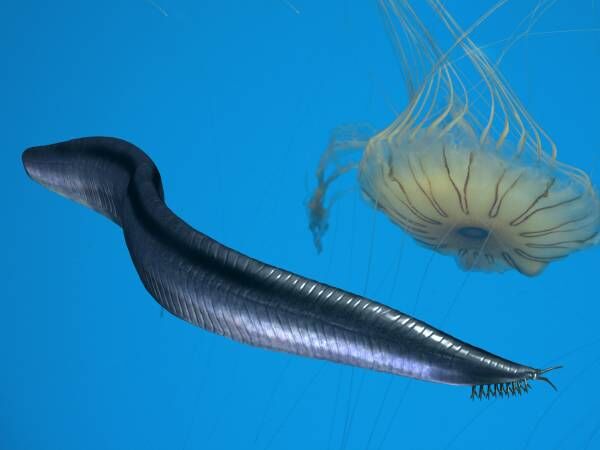Neuroscience
What Actually Is Consciousness, and How Did It Evolve?
Theories of consciousness must be firmly rooted in evolutionary biology (Part 1)
Updated October 7, 2023 Reviewed by Matt Huston

People have long pondered what consciousness actually is. Consciousness seems very different from other biological functions—like some sort of nonmaterial essence within our heads. Thoughts and feelings seem ethereal, untethered from anything physical. Self-awareness seems like a phenomenon utterly divorced from anything that could possibly be produced by cells comprised of physical particles.
People used to think of life itself that way too, and many still do. But biologists solved the enigma of what makes things alive mid-way through the twentieth century, the foundations of that understanding having been built over the preceding century. Before that, living things were believed to possess some sort of animating essence that accounted for their difference from inanimate matter. People could not imagine how the same material particles that comprise inanimate matter could be arranged in such a way as to make something alive, without adding that special, mysterious nonmaterial essence. Let alone how inanimate matter could organize itself in such clever and intricate ways through entirely unguided, spontaneous processes. People’s intuitions tell them that surely such complexity requires an intelligent designer. So much for intuition.1
Now, in the present century, science is turning its attention to decoding the enigma of consciousness. It is applying the same kind of systematic step-by-step methodology to deconstruct what at first glance has the appearance of an insurmountable mystery.
We have already known for a long time from clinical neurology and from my own field, clinical psychiatry, that without a shadow of a doubt there is no aspect of the mind that is not entirely the product of, and utterly dependent on, the physical brain. Disruption, disassembly or enhancement of brain circuitry (subtle or major) can radically alter any aspect of the mind. And yet the mystery of how exactly the brain produces consciousness has remained unexplained.
What do we even mean by consciousness? Most definitions of consciousness involve some level of awareness, or subjective experience. We humans have an especially highly developed subjective sense of self and self-awareness. How does this emerge from an approximately three-pound organ with the consistency of tofu?2
How can a purely physical thing feel like something? Surely consciousness is some kind of otherness? Perhaps consciousness is an as-yet undiscovered fundamental property of the universe, pervading the universe like electromagnetic radiation? If so, perhaps it exists ‘out there,’ independent of the physical brain, just requiring a brain to receive and transmit it—like a radio in relation to radio waves? I have explained elsewhere why such ideas are regarded by mainstream scientists as utterly incompatible with what science actually tells us. The prevalence and popularity of such folk-science ideas point to the failure to translate modern neuroscience insights into terms accessible to the general educated public.
Trying to understand and speculate on the nature of consciousness without a fairly deep understanding of biology and neuroscience is a futile undertaking. This blog series is one of many attempts by science writers to make that kind of knowledge more accessible to a general readership, at least in very general terms. It’s important to appreciate, however, that any attempt to distill such a large, complex and ever-changing body of knowledge into blog-length summaries will necessarily have to sacrifice detail, substantiation, subtlety and nuance. Nevertheless, here goes:
One of several fruitful scientific approaches to understanding consciousness is to study its evolutionary origins. Once we shed all magical thinking about the nature of consciousness and try to understand it as a biological phenomenon, it immediately becomes apparent that like all other biological phenomena and like life itself, it must have evolved in gradations.
In the beginning
So how far back in evolutionary history should we go to look for the origins of consciousness?
All the way back. Nearly four billion years. Long before animals had brains, or even a nervous system. Back to simple single-celled organisms like bacteria. Back to the origin of life itself.
This is not to suggest that simple unicellular organisms possessed consciousness, or even a modicum of it. Not consciousness, but its building blocks: behavior and the predecessors of detection, learning and memory.
Properly understood, behavior, detection (sensing), learning and memory do not require a nervous system. Nervous systems came later, followed by central nervous systems. These were evolutionary adaptations conferring greater coordination and flexibility to the behavior of organisms in their responses to stimuli. At the most basic level, responses to stimuli can be characterized as either approach (e.g., to a nutrient) or withdrawal (from something noxious or dangerous). Behaviors in more complex organisms are basically just more elaborate versions of this. In fact, some of the genes involved in learning are the same in complex animals as in protozoa, which are very primitive single-celled organisms lacking a nervous system and which evolved at least 1.5 billion years ago.3
Nervous systems, and especially more complex brains, ultimately enabled organisms to regulate their behavioral responses4 through such capacities as:
- prediction
- planning
- delaying (inhibiting)
- remembering (storing patterns of information from past encounters)
- learning (modifying behavior through conditioning, or through remembering previous outcomes, or in higher animals through imitation)
- weighing different behavioral responses (comparing, ‘deliberating’).
- evaluating outcomes of behavior
Consciousness probably evolved as a way for organisms to go far beyond responding merely reflexively to stimuli—to be able to respond more flexibly, and in a more delayed and planned manner. A key function of consciousness is probably to allow non-reflexive behavior such as responding after a delay, or executing an action based on internally generated plans.5
There are degrees of consciousness and different varieties of it. And even in higher animals like us, most behaviors are still carried out by nonconscious, automatic processes. What brings a behavior into conscious awareness and control, and why, is the subject of much research.
Several books by prominent scientists in the last few years have taken the evolutionary approach to the understanding of consciousness. Among them are (in order of discussion in this blog series): The Ancient Origins of Consciousness: How the Brain Created Experience (2016) by Todd Feinberg and Jon Mallatt and the follow-up book Consciousness Demystified (2018) by the same authors, The Deep History of Ourselves: The Four-Billion-Year Story of How We Got Conscious Brains (2019) by Joseph LeDoux, From Bacteria to Bach and Back: The Evolution of Minds (2017) by Daniel Dennett, The Strange Order of Things: Life, Feeling, and the Making of Cultures (2018) by Antonio Damasio, and Rethinking Consciousness: A Scientific Theory of Subjective Experience (2019) by Michael Graziano.6
These books chart an evolutionary course through:
- primitive cell signaling beginning 3.5 to 3.8 billion years ago in the first single-celled organisms (prokaryotes, namely bacteria and archaea, which reproduce asexually by simple cell division); followed around 2 billion years ago by larger, relatively more complex single-celled organisms (eukaryotes, such as protozoa; eukaryotes contain a nucleus and organelles and reproduce sexually, which introduces more genetic diversity)
- to the evolution of the first diffuse (non-centralized) nervous systems in multicellular organisms (in hydra and jellyfish-like creatures) around 600-700 million years ago
- to the precursors of centralized nervous systems in primitive worm-like creatures in the Cambrian period, beginning almost 550 million years ago
- to more richly interconnected central nervous systems in more complex invertebrates and vertebrates from the Cambrian period onward
- to the progressively more sophisticated capacities of brains in larger animals (fish, amphibians, reptiles, birds, mammals, and also cephalopods) in the last few hundred million years, able to form internal representations of their environment and of themselves (i.e., maps or models of their external environment and of their own body and actions), with correspondingly more flexible behaviors
- to the stage where such internal representations in higher mammals developed into a basic sense of self
- to the ability in primates and more especially humans to internally represent their own thinking patterns more reflectively. And, probably only in humans, to be aware of being aware, reflecting on their own existence as conscious beings.
It’s important to understand that an internal representation is fundamentally a physical thing—a physical representation inside the nervous system, embodied in molecular changes inside neurons and on neuronal membranes and in the connections those neurons form with one another. For further explanation and discussion of the physical nature of internal representations, and how even highly abstract concepts and self-concepts are built as representations of representations of representations (etc.), see my blog post “What Actually Is a Thought? And How Is Information Physical?” As stated there: Thoughts are physical representations or maps. They have shape and weight.7
This will be a five-part series on the evolutionary origins of consciousness, showing how the evolutionary perspective sheds a whole lot of light on the mystery of what consciousness actually is and how it could arise from entirely physical, biological processes. In Parts 2, 3, 4 and 5 (click on hypertext links), I will review, contrast and synthesize the different theories developed in the half-dozen books listed above. By the end of this series, you will be in a better position to speculate about the nature of consciousness without resorting to fanciful ideas that are not grounded in science, like the radio theory described earlier. But I would encourage you to read the actual books, and the many other solidly scientific sources available (just watch out for sciencey-sounding pseudoscience).8 This blog series is just a summary, to get you started, in understanding where science is at so far in one of its more promising inroads into answering one of the biggest scientific and philosophical questions of all.9
References
1. Science’s explanations for how the universe, life and consciousness are entirely the product of spontaneous, unguided processes are elaborated in my book, Finding Purpose in a Godless World: Why We Care Even If The Universe Doesn’t (Amherst, NY: Prometheus Books, 2018), and summarized in this YouTube video. The book and video delve into questions of purpose, meaning and morality in a random, purposeless, godless universe.
2. https://www.scientificamerican.com/article/what-is-consciousness/ and https://www.npr.org/templates/story/story.php?storyId=5396115
3. Joseph E. LeDoux, The Deep History of Ourselves: The Four-Billion-Year Story of How We Got Conscious Brains (New York City: Viking, 2019). LeDoux also provides this helpful distinction in one of his own Psychology Today blog posts between different types of behaviours, listed from the most automatic to the most controlled and flexible:
"There are many different kinds of behaviors, and each depends on different brain circuits. Key examples include: reflexes; innate and conditioned reaction patterns; instrumentally acquired habits; instrumental goal-directed actions based on trial-and-error learning; and instrumental goal-directed actions dependent on cognitive modeling—that is, on simulating possible outcomes of actions by using internal representations."
[CLICK 'MORE' TO VIEW FOOTNOTES 4-9]
4. Brains also enabled organisms to more effectively regulate their internal physiological states.
5. Kanai, R., Chang, A., Yu, Y., Magrans de Abril, I., Biehl, M., & Guttenberg, N. (2019). Information generation as a functional basis of consciousness. Neuroscience of consciousness, 2019(1), niz016. https://doi.org/10.1093/nc/niz016
6. Todd E. Feinberg and Jon Mallatt, The Ancient Origins of Consciousness: How the Brain Created Experience (Cambridge, MA: MIT Press, 2016); Todd E. Feinberg and Jon M. Mallatt, Consciousness Demystified (Cambridge, MA: MIT Press, 2018); Daniel C. Dennett, From Bacteria to Bach and Back: The Evolution of Minds (New York: W.W. Norton & Company, 2017); Antonio R. Damasio, The Strange Order of Things: Life, Feeling, and the Making of Cultures (New York: Pantheon Books, 2018); Joseph E. LeDoux, The Deep History of Ourselves: The Four-Billion-Year Story of How We Got Conscious Brains (New York City: Viking, 2019); Michael S. A. Graziano, Rethinking Consciousness: A Scientific Theory of Subjective Experience (New York: W.W. Norton & Company, 2019). See also Arthur S. Reber, The First Minds: Caterpillars, Karyotes, and Consciousness (New York: Oxford University Press, 2019).
7. The neuroscientist Stanislas Dehaene speculates that maybe what makes human cognition unique is "the peculiar way we explicitly formulate our ideas using nested or recursive structures of symbols"—Stanislas Dehaene, Consciousness and the Brain: Deciphering How the Brain Codes Our Thoughts (New York, NY: Viking, 2014), (p. 250).
8. Pseudoscientific theories of consciousness most commonly contest the idea that consciousness is purely the product of physical brains. Such theories align with spiritual views of the world (including ‘spiritual but not religious’ worldviews) and reject the mainstream scientific materialist worldview. Proponents of such theories are in the habit of citing individual scientists or cherry-picking quotes by certain scientists in support of their view. There is certainly debate among scientists about specific mainstream scientific theories of consciousness. And, of course, there is still a minority of scientists who hold personal spiritual beliefs—scientists are inclined toward the same human emotions and intuitions as everyone else, and have to work hard to consciously over-ride these to reach evidence-based conclusions. Nonetheless, it can be categorically stated here with the utmost confidence that the mainstream twenty-first century scientific view is unequivocally that consciousness (in the generally understood meaning of the term, as awareness or subjective experience) is the product of the brain and nothing but the brain. The only thing that would change that would be the successful engineering of advanced artificial intelligence capable of consciousness—which is in principle possible and probably will happen at some point in the future, but is more difficult to engineer than most people assume. Also, there may well be alien life forms elsewhere in the universe with consciousness derived from an organ that is technically not a brain but which would most probably still be analogous to a brain. The popular notion that consciousness exists ‘out there,’ as if in the ‘ether,’ independent of physical brains, is appealing to many people for very obvious psychological reasons—because it implies that there is some essence of who we are that is capable of surviving the death of our physical body and brain. But that notion is most assuredly not in the slightest way consistent with serious science. (Unless one is talking about uploading our minds into some artificial system—which, while also in principle possible, would be immensely harder than the challenge of 'merely' engineering conscious AI).
9. Other, previous posts of mine on the subject of consciousness include: The Physical Evolution of Consciousness; Do You Have Free Will?; How Could Mind Emerge From Mindless Matter?; What Actually Is a Thought? And How Is Information Physical?; Where Does Purpose Come From? (If the Universe Had None); Is There Life After Death? The Mind-Body Problem; How Do We Know What Is Real?




